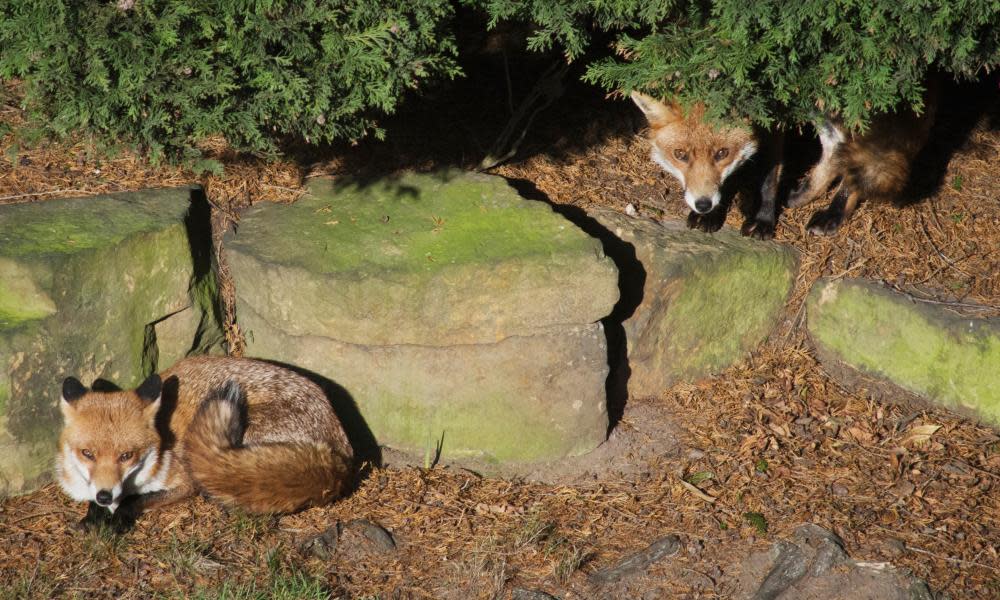Is the ‘Croydon cat killer’ a fox – or a human still at large?

Police officers, vets and an animal rescue organisation believe that the killing and mutilation of some cats, rabbits and other animals across parts of England are the result of human involvement, even though a major police investigation has found no evidence to support that claim.
Just over 100 days after the Metropolitan police closed its investigation into the “Croydon cat killer”, declaring that the deaths and mutilation of scores of cats in London and the south-east were most likely carried out by foxes, the Observer understands that individual officers and several veterinary practices continue to suspect that someone is targeting animals. They have been contacting South Norwood Animal Rescue and Liberty (Snarl), an organisation that has investigated the killings, insisting that some of the dead animals were killed by human hand.
The Met concluded that “hundreds of reported cat mutilations in Croydon and elsewhere were not carried out by a human and are likely to be the result of predation, or scavenging by wildlife on cats killed in vehicle collisions.” But other forces have found that some cat killings were deliberate.
Last month a man was jailed in Northampton for a string of arson attacks and cat mutilations. Snarl says that, since then, it has learned of at least seven other unsolved killings, suggesting at least one other person is at work.
Earlier this month Northamptonshire police issued a press release after the discovery of a dead cat. It said: “The cat was found mutilated with a vet stating that it appears to have been killed by human hands.”
Tony Jenkins, co-founder of Snarl, said that there had been a small drop-off in reported incidents after the Met’s decision to close the case, but that numbers of reported mutilations had quickly gone back up again. The organisation had dealt with between two and seven suspicious deaths each week. In some incidents the body parts were returned after the animal’s corpse had been removed.
“You don’t tell me foxes do that,” said Jenkins, who has not ruled out that a small group of people could be at work.
Snarl said that it had cases reported to it from as far north as Manchester and Liverpool and as far west as Devon and Cornwall.
“But the majority are around the south-east London area and are indicative of someone travelling around the south-east,” Jenkins said. “It could be a sales rep, someone who has got a job that sees them travel around a lot and they stop off to kill a cat or a rabbit or a fox.” Jenkins suggested that some police officers worried that deaths were not being investigated: “We’ve had a number of cases reported by the police themselves. Two weeks after the police closed the investigation, an officer in Sutton rang me and said ‘this in my mind is human-related but we’ve been told not to investigate’.”
Three veterinary practices had also alerted Snarl to possible mutilations by human hands since the Met had closed the case, Jenkins said.
One practice, Streatham Hill Vets, issued a warning on its Facebook page shortly after the Met closed the operation. “We have had several of these bodies brought in to us,” the post said. “They have all consisted of clean, surgical-type amputations or beheadings. They were not done by foxes or wild animals. It is exceptionally rare for a fox to attack a cat and they should not be used as scapegoats for these horrific crimes.”
Jenkins said that other forces continued to investigate alleged killings: “There is a case in Dartford at the moment which is still being investigated by Kent police. There is no way it was done by a fox.”
Although Snarl acknowledges that foxes did play a part in some of the mutilations it has seen, the organisation said that in some cases the heads had been cut off cleanly, indicating the use of a blade. What appeared to be the deliberate placing of a cat’s head in prominent locations – often near, or on, a child’s trampoline – also indicated human involvement, the organisation said.
Cats are not the only animals targeted. “We’ve had a case in Watford where a rabbit was taken out of a locked hutch, killed, and its body left in the middle of a lawn so that it was visible from the bedroom window,” Jenkins said. The rabbit’s head was returned to the same spot as where the body was found six months later.
“What we can reliably say is that at least one person is killing cats and other animals after abducting them and then displaying them to be found,” Jenkins said. “People still need to keep their pets indoors at night.”

 Yahoo News
Yahoo News 
